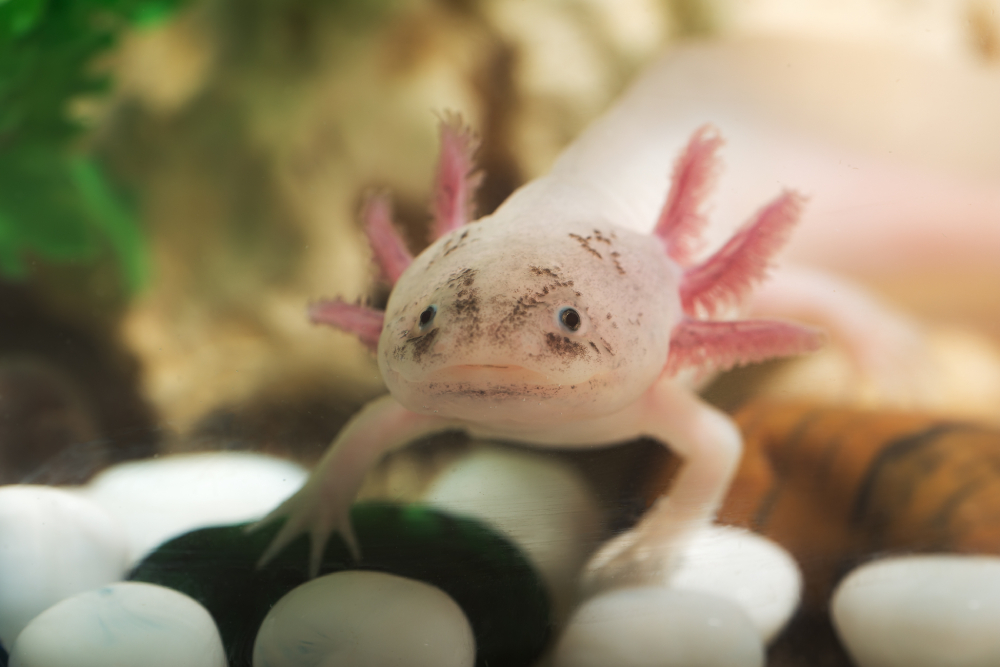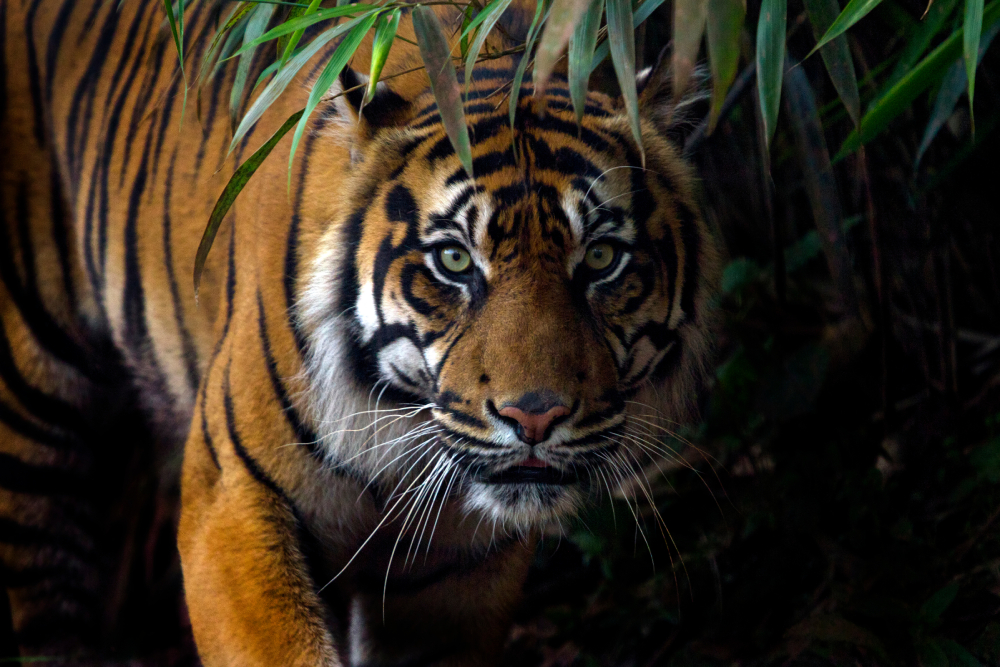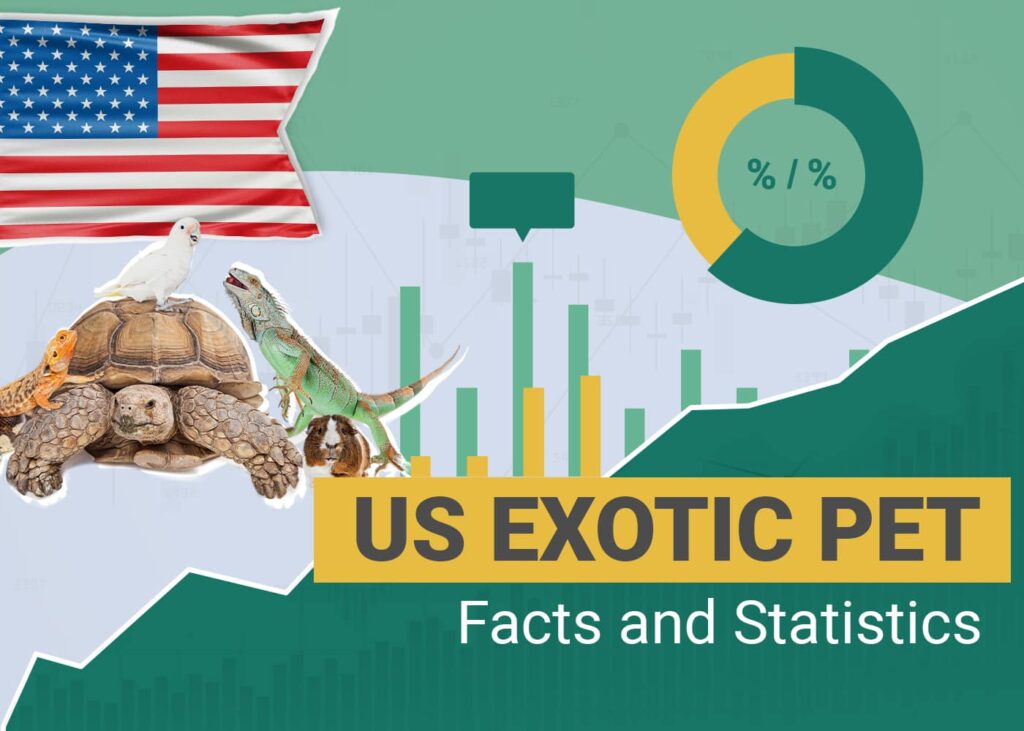Click to Skip Ahead
Exotic pet ownership has risen substantially in the past few decades. While more and more people are turning to nontraditional pets instead of cats and dogs, the statistics of exotic pet ownership can be sobering.
Unlike other pets, exotic pets aren’t domesticated. They haven’t adapted to living with people most of the time, and their care can be very complicated.
For a true look at exotic pet ownership, it’s best to dive into the statistics.

The 10 Exotic Pet Statistics
- Around 17.6 million exotic pets are currently owned in the United States.
- Approximately 9 million US households own at least one exotic pet.
- At least 7,000 tigers are currently being kept as pets in the United States.
- Of these tigers, only around 500 currently live in an accredited facility.
- In the US, the exotic pet trade is currently worth over $15 billion.
- Worldwide, the global exotic pet trade is worth about $42.8 billion annually.
- Only around $22.8 billion of this trade is legal.
- Only 20% of exotic pets make it through their first year.
- 5%–20% of reptiles die during importation into the US.
- Some species, like slow lorises, have a mortality rate of up to 90% during transportation.

Exotic Pet Ownership
1. Around 17.6 million exotic pets are currently owned in the United States.
(Safe Worldwide)
With 17.6 million exotic pets at least, it’s clear that there is a significant demand for owning nontraditional pets. However, the motivations behind keeping these pets are often misguided, and the pets’ health is not always taken into consideration.

2. Approximately 9 million US households own at least one exotic pet.
(Safe Worldwide)
There is currently a trend towards owning less-common animals. Many of these animals are advertised over social media, which we will discuss further below. It’s important to consider the specific needs of exotic pets and whether or not they are truly suitable for captivity.
3. At least 7,000 tigers are currently being kept as pets in the United States.
(Tigers in America)
There is a large number of tigers being kept in captivity. Often, these are concentrated in states that have very lax exotic animal laws, like Texas. Shows like “Tiger King” have helped raise awareness about these animals, though.
4. Of these tigers, only around 500 currently live in an accredited facility.
(Tigers in America)
Sadly, most tigers living in captivity are not in accredited facilities like zoos. Accredited facilities typically have stricter regulations and expertise for handling dangerous animals. This implies that the vast majority of pet tigers are likely living in inadequate conditions.


The Exotic Pet Industry
5. In the US, the exotic pet trade is currently worth over $15 billion.
(Born Free)
This hefty price tag shows the substantial economic power of the exotic pet trade in the US. Large players often influence laws regarding captive breeding, import restrictions, and ownership regulations.
6. Worldwide, the global exotic pet trade is worth about $42.8 billion annually.
(Animal Law)
The vast scale of global trade is another concern. There is a high demand for wild animals, leading to their over-collection in some species. The lure of profits also incentivizes smuggling and unethical capture methods. Across the globe, regulations and enforcement might vary, potentially leading to inadequate care for animals throughout the trade chain.
7. Only around $22.8 billion of this trade is legal.
(Animal Law)
The significant gap between the total trade value ($42.8 billion) and the legal trade ($22.8 billion) suggests a massive black market for exotic pets. This has serious consequences. Smugglers often prioritize profit over animal welfare, leading to cruel capture, transport, and housing conditions. The illegal trade can particularly threaten endangered or vulnerable populations.


The Result
8. Only 20% of exotic pets make it through their first year.
(Animal Law)
This statistic suggests a high likelihood of exotic pets dying within their first year. This high death rate likely occurs due to several factors. Many owners lack the knowledge or resources to meet the specific needs of exotic animals, leading to malnutrition, improper habitat conditions, or failure to recognize health issues.
Many wild animals also experience significant stress in captivity. Often, this stress leads to poor behaviors and can lead to sickness.
9. 5%–10% of reptiles die during importation into the US.
(Humane Society)
Even before reaching pet stores or private owners, at least 5% of reptiles die during transportation. Often, this is due to poor handling, stress, and inadequate habitats. Sadly, some animals have it even worse.
10. Some species, like slow lorises, have a mortality rate of up to 90% during transportation.
(International Animal Rescue)
This statistic highlights the particular vulnerability of certain species. Slow lorises are highly social primates with complex needs. Their capture, often involving brutal methods to remove their venomous teeth, and the stress of transport often lead to a devastatingly high mortality rate.


Frequently Asked Questions About Exotic Pets
What’s the Most Common Exotic Pet?
In the United States, reptiles are the most commonly owned exotic pets. In some areas, they may make up as much as 51% of all exotic pets sold (with birds making up another large portion). Snakes and lizards are the most common types of owned reptiles.
How Many Exotic Pets Are Captured Each Year?
Unfortunately, there’s no single, reliable source for this data due to the prevalence of illegal wildlife trafficking. Estimates suggest millions of animals are captured annually to feed the global exotic pet trade.
It’s believed that many “captive-bred” exotic pets are actually wild-caught and illegally passed off as captive-bred. Breeding any animal is very expensive and requires a long waiting period before it is profitable. Many breeders may pad their wallets by selling some wild-caught animals as captive-bred.
For instance, one report looked at the breeding of geckos in Indonesia, finding that it’s practically impossible for these breeders to produce the number of geckos they claim to be.
How Many People Are Injured by Exotic Pets?
Injuries specifically occurring from exotic pets are hard to determine. Often, these injuries aren’t properly reported. In fact, they may not be reported at all. There is no law requiring reporting or agency that keeps up with these numbers.

What’s the Rarest Exotic Pet?
Determining the exact rarity can be challenging. However, here are some strong contenders:
- Axolotls: These salamanders are endangered in the wild and can be challenging to breed in captivity.
- Gelada Monkeys: These primates are heavily regulated and banned in many places due to their complex needs.
- Saola: This recently discovered antelope species is incredibly rare and strictly protected in its native Southeast Asia.
What Exotic Pets Live the Longest?
Some exotic pets can live quite long lives when properly cared for. For instance, certain tortoise species can live over 100 years if cared for properly. Macaws are also very long-lived, with some living over 80 years.
That said, providing the proper care is often harder than many owners realize.
What are the Cons of Exotic Pets?
Owning exotic pets is not for most people. They require specialized care and tend to be a lot of work. They typically have specific dietary, environmental, and social needs that can be expensive and difficult to meet in a captive setting. Finding a qualified veterinarian is also impossible in many areas.
Furthermore, the capture and transport of exotic animals raises ethical concerns. Very few animals survive the trip to become someone’s pet, and only around 20% of exotic animals survive their first year in captivity.

Conclusion
The rise of exotic pet ownership is a concerning trend. Many people love the idea of unique companions, but the statistics paint a depressing picture. Many exotic pets do not make it past their first year due to the inadequate care and stress of captivity.
Sadly, the exotic pet trade is still booming. Over $42.5 billion globally is wrapped up in the exotic pet industry. There is a thriving black market for practically every species. The demand for exotic pets can threaten wild populations, especially vulnerable species.
If you’re considering adopting an exotic pet, it’s important to be honest with yourself and prioritize the pet’s well-being. These animals require specialized care, and it’s important to source them responsibly. There’s a significant difference between admiration for an exotic creature and providing it with a healthy and fulfilling life in captivity.






